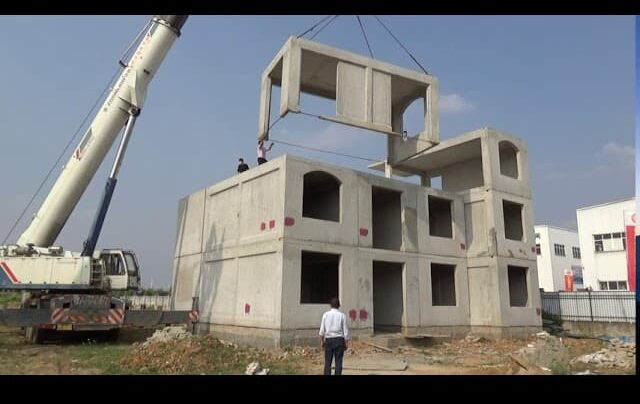In the quest for affordable and sustainable housing solutions, low-cost precast concrete houses have emerged as a promising alternative. This innovative construction method combines efficiency, durability, and cost-effectiveness to address the growing demand for affordable housing worldwide. In this article, we delve into the advantages and features that make low-cost precast concrete houses a practical and appealing choice for homeowners and builders alike.
1. Cost-Effective Construction:
One of the primary advantages of low-cost precast concrete house is their affordability. Precast concrete components, such as walls, floor slabs, and roof panels, are manufactured off-site in a controlled environment, reducing labor and material costs. This streamlined process results in significant cost savings compared to traditional construction methods.
2. Rapid Construction Time:
Precast concrete houses boast shorter construction timelines, offering a quicker path from groundbreaking to occupancy. With precast elements ready for assembly, the on-site construction process is expedited, reducing labor expenses and allowing homeowners to move into their new residences sooner.
3. Energy Efficiency:
Precast concrete provides excellent thermal mass, contributing to the energy efficiency of the house. The material’s ability to absorb, store, and release heat helps regulate indoor temperatures, reducing the need for extensive heating or cooling systems. This inherent energy efficiency translates to lower utility bills for homeowners.
4. Durability and Resilience:
Precast concrete is renowned for its strength and durability. Houses constructed with precast concrete components can withstand severe weather conditions, including hurricanes, earthquakes, and fires. This resilience ensures a longer lifespan for the structure, minimizing the need for frequent repairs or renovations.
5. Customization and Design Flexibility:
Contrary to common misconceptions, low-cost precast concrete houses offer a wide range of design possibilities. The precast elements can be customized to achieve various architectural styles, finishes, and textures. This flexibility allows homeowners to personalize their residences without compromising cost-effectiveness.
6. Sustainability:
Precast concrete is an environmentally friendly building material. The manufacturing process produces less waste compared to traditional construction, and the durability of precast concrete structures contributes to reduced long-term environmental impact. Additionally, the thermal mass properties of precast concrete contribute to energy efficiency, aligning with sustainable building practices.
7. Low Maintenance Requirements:
Low-cost precast concrete houses generally require minimal maintenance over their lifespan. The durable nature of the material means that homeowners can enjoy a residence that retains its structural integrity and aesthetic appeal with minimal upkeep, translating to long-term cost savings.
8. Resistance to Pests:
Unlike traditional wood-framed houses, precast concrete is not susceptible to termites or other pests that can compromise the structural integrity of a building. This resistance to pests ensures a healthier living environment and eliminates the need for chemical treatments or pest control measures.
9. Affordability for Mass Housing Projects:
The cost-effectiveness and rapid construction capabilities of low-cost precast concrete houses make them particularly well-suited for mass housing projects. Governments and developers looking to address housing shortages can benefit from the scalability and efficiency of precast construction.
Conclusion:
Low-cost precast concrete houses represent a paradigm shift in the approach to affordable and sustainable housing. With advantages ranging from cost-effectiveness and rapid construction to energy efficiency and durability, these houses offer a compelling solution for both individual homeowners and large-scale housing projects. As the demand for affordable housing continues to rise, the adoption of low-cost precast concrete houses stands as a testament to the innovation and adaptability of the construction industry in creating homes that are not only cost-effective but also resilient and environmentally conscious.

